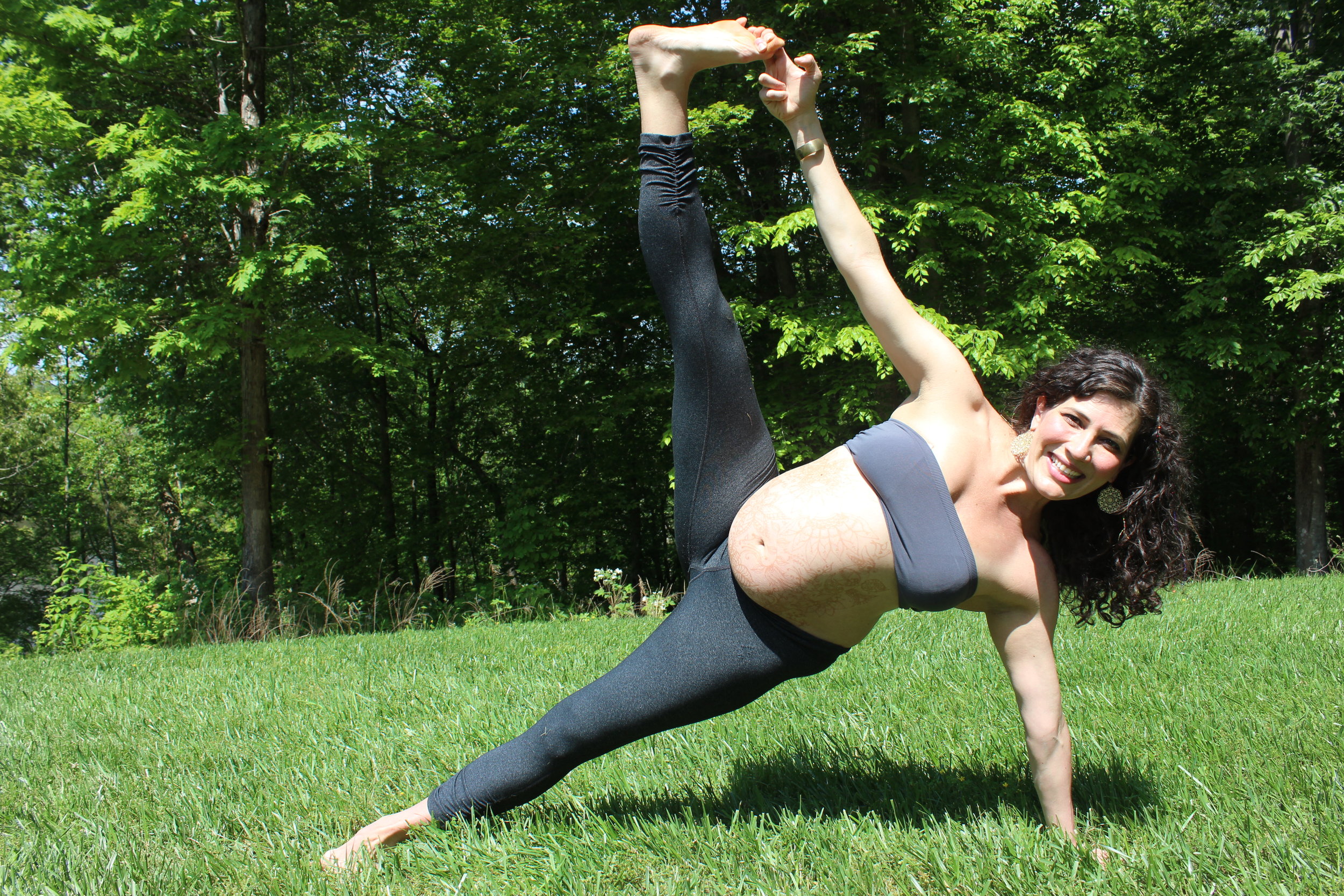Yes, Pregnant Women Can Do Core
As both a yoga and Pilates instructor, this is something that I get asked fairly often, and since there are various myths and misconceptions around what movements are safe during pregnancy, let's answer this one clearly: yes, pregnant women can do core.

That's not to say that when you're pregnant you should begin a die-hard daily crunch routine: no. But there are plenty of safe core moves that are challenging, fun, and even potentially helpful during labor.
Let's start with what you should avoid: crunches. Crunches and crunch-like moves aren't particularly useful for pregnancy and birth, as the main muscle worked by those is the rectus abdominis, the most superficial of the core muscles. If you have any degree of diastasis recti (the separation of the rectus abdominis muscle), engaging in core exercises that specifically work that space could aggravate the problem.
(A side note on diastasis recti: the more recent literature shows that we don't yet know the clear causes of diastisis recti. Weight gain doesn't cause it. Exercises don't seem to cause it, although the wrong ones may exacerbate it, as noted.)
The takeaway: whether you have significant diastasis recti or not, avoid crunches during pregnancy. They don't help anyway!
But wherever labor may lead you—a c-section or a vaginal birth—the right core work during pregnancy builds stamina, strengthens your pelvic floor (which does so. much. work. while you're carrying baby), and keeps your inner core muscle toned. That last part matters a lot: your transverse abdominal muscle (TA) is the deepest layer of your core, and it serves as a sort of sheath or corset around your body, snugging your baby close in. Poses and movements that encourage TA strength include plank, side plank, elbow plank, pelvic tilts, and bird dog, to name just a few. And even simply sitting comfortably and practicing engaging your core as you exhale can help build strength and awareness in the TA.
There's reason to believe that going into pregnancy with developed core muscles might make carrying baby easier: back pain is a common ailment of pregnancy, and a strong core can help you maintain good posture and avoid arching your lower back area—a common place of pain. And core strength may have other benefits: anecdotally, new moms often report that going into labor with a strong core made labor easier and postnatal recovery faster. It seems logical to imagine that better control over abdominal muscles might help with pushing during labor or healing from a c-section. Currently, research only confirms that overall, general good fitness can shorten delivery times. Still, given the possible ways it might help and it's overall general safety, there's certainly no good reason to avoid core while pregnant.
The bottom line: Core during pregnancy is just fine. You can do big, crazy core poses like plank, if that seems like fun and feels good in your body. But you can also limit your core work to engaging and releasing your core (squeezing in your belly and then softening it) and engaging and releasing your pelvic floor (kegels) in a comfortable seated position.
